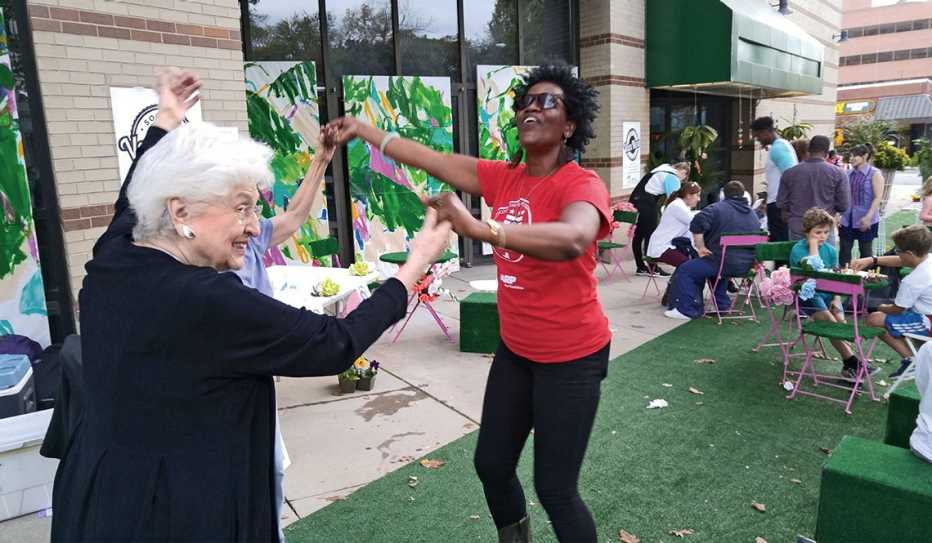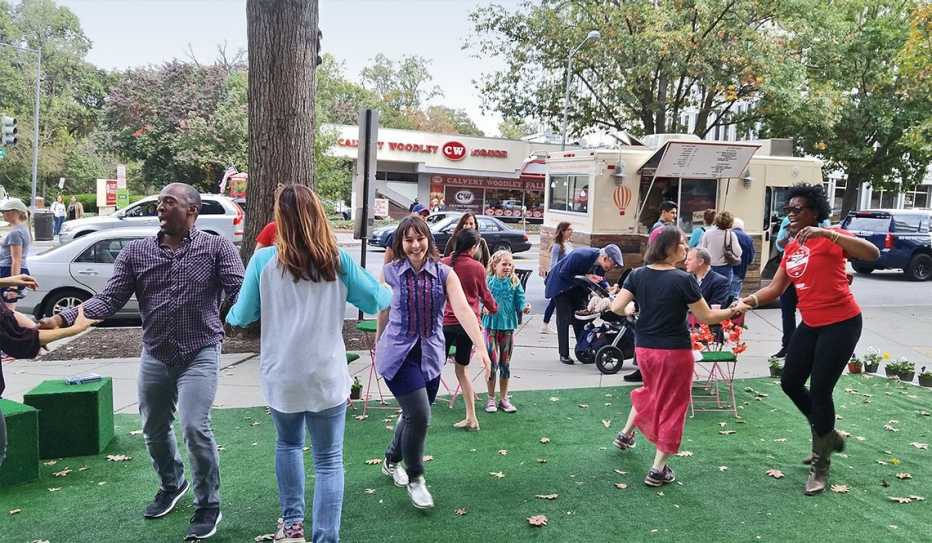AARP Hearing Center


The large, gray concrete plaza at 4250 Connecticut Avenue NW, near the Van Ness Metro Station in Washington, D.C., is barren and lifeless.
“A photograph of the Van Ness built-environment surroundings would show a stark, concrete plaza, devoid of life,” Theresa A. Cameron, executive director of the nonprofit organization Van Ness Main Street, explained. “The retail space is empty, and the surrounding buildings are monumental and unwelcoming. Van Ness has lost businesses and its daytime office crowd, which has taken a toll on local restaurants, shops and the vitality of the streetscape. There are limited activities where residents can meet and learn about each other. Residents don’t have a sense of place in Van Ness.”


Through community meetings and outreach efforts, Cameron, fellow residents and neighborhood groups decided that one way to bring life to the plaza would be to use it for a party. The invitation, from what they dubbed the Van Ness Social Club, read, in part: “Get to know your neighbors at a good old fashioned social. We’ll meet each other on the plaza … and learn some dance steps (including the first-ever dance move created especially for Van Ness!), drink tea, eat cake, play games, dance, and have conversations with each other.”
On the Saturday of the event, neighbors appeared for the late afternoon gathering. They sat at tables set up on the plaza, which had been decorated with a wall of colorful, oversized murals. They walked on a nearly block-long green carpet. They played human bingo and giant checkers. And they learned and then danced the “Van Ness shuffle.”
A comment board posted at the party was full of notes from participants sharing their experiences. “I met someone in my building I’d never met before,” wrote one. “The plaza is a great place to have an event,” said another.
In the book The Great Good Place: Cafes, Coffee Shops, Bookstores, Bars, Hair Salons, and Other Hangouts at the Heart of a Community, author Ray Oldenburg, an urban sociologist, writes that people need a third place to gather besides home and work.
On that Saturday afternoon, a third place was created in a Washington neighborhood.
Van Ness Main Street was a recipient of a 2017 AARP Community Challenge grant. This article was adapted from the "Inspire Community Engagement" chapter of Where We Live: Communities for All Ages — 100+ Inspiring Ideas From America’s Local Leaders.
Page published August 2018
More from AARP.org/Livable
Use the dropdown to choose a livability topic.

































.jpg?crop=true&anchor=13,195&q=80&color=ffffffff&u=lywnjt&w=2008&h=1154)




























